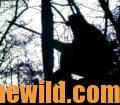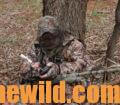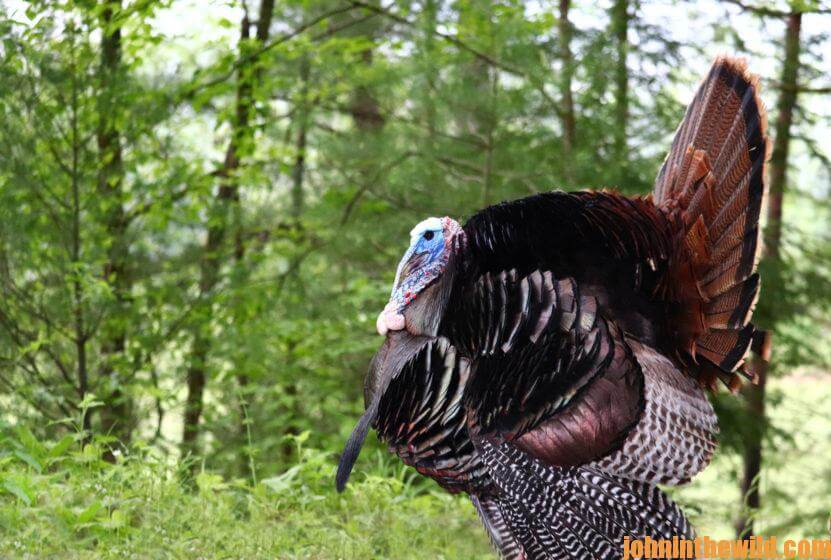Editor’s Note: Some states still have open turkey seasons. Although my home state of Alabama’s season has ended, I know you still can learn plenty of turkey savvy from my longtime friend, 81-year-old J. Wayne Fears of north Alabama, who can’t remember a time when he hasn’t hunted wild turkeys. He started guiding for turkeys in 1975 full-time until about 1985 and then has hunted them part-time ever since. He’s hunted turkeys all over the U.S. and has battled some of the toughest longbeards in the nation. This week we’re learning from him about what gobblers have taught him through the years.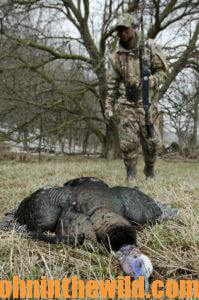
I was hunting Merriam’s gobblers in South Dakota on a big ranch in the middle of nowhere. The turkeys on that ranch only had one place where turkeys could roost, which was along a creek lined with cottonwood trees. The turkeys would spend the day in wide-open prairie country and in the evening, come to these cottonwood trees to roost. I was hunting with a friend of mine, Tom Fegley, and several other outdoor writers were in camp with us. For three or four days, we had tried to call in a tom but had not been successful. Since we were hunting early in the season, snow had fallen three or four days during this hunt. If anyone killed a turkey, he would become a hero because we all needed to shoot pictures with a Merriam’s gobbler for our articles we’d write later.
The last morning of the hunt, all the writers set-up to take gobblers. The plan was to take a gobbler as he flew out of the cottonwood trees and into the open prairie. The trees along the creek were loaded with gobblers and hens. Just before first light, the clamor of yelps, cackles and gobbles sounded like an orchestra with many different instruments – all being played at the same time. Every writer on this hunt felt confident that he’d return to camp with a big, beautiful Merriam’s gobbler on his shoulder. However, at flydown time, there wasn’t a single gobbler that flew in the direction of the hunters.
Each morning, as we watched the turkeys fly from the roost, they’d head toward the high, open, prairie-like mountain flats. I decided to take a different approach and run ahead of those turkeys. Then I figured I could call them before they went to those high benches up in the mountains. Needless to say, I didn’t tell the other writers about my plan. I knew that the run would be about three quarters up the steep mountain, and my lungs felt as though they were going to burst before reaching those high-mountain meadows. However, I thought if I could outthink those turkeys, I might have a chance to take a gobbler. Not only would I have a big beautiful Merriam’s gobbler to share in my article, but I also would share this bird with the other outdoor writers who also 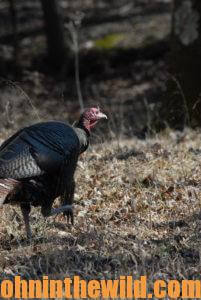 needed pictures of a Merriam’s gobbler.
needed pictures of a Merriam’s gobbler.
When I finally arrived at one of those high meadows, I sat still and waited. The turkeys in the cottonwoods had stopped gobbling and yelping. I knew that they were traveling. I was hoping they’d fly up to the meadow where I was waiting. I started yelping very softly, and after hearing two gobblers down below, I quit my calling and started gobbling. I could tell they were coming up to the meadow where I’d already set up by the sounds of their gobbles. There weren’t any trees in the meadow, but there were small clumps of grass just above the snow on the ground. I attempted to hide under the snow, waiting for the gobblers.
I yelped softly, trying to sound like a hen as the turkeys continued to gobble. Four or five hens walked by and actually stepped on me. The snow was stinging my stomach and legs, but I still didn’t move. I spotted three longbeards behind the hens, and once one gobbler separated himself from the other two, I assumed he was in range and fired. I shot the bird using a 12-gauge #5 shot and quickly jumped up while the turkey was flipping. To finish him off, I crushed his head with my big ole boot. He kept flopping for a little while, but finally stopped, and at that moment, I was very proud of myself.
After hearing my shot, all of the other writers grabbed their binoculars, left their stands and gathered up at the bottom of the hill. When the turkey stopped  flopping, I picked up the bird and held him up high for everyone to see – like I was a proud warrior returning home after winning a hard-fought battle. I put the turkey over my shoulder and started marching down the mountain where the other writers were waiting. As I came down the mountain, I was reminded of how heavy the turkey was. Since he was dead, I decided to lay him down on the snow. I knew I could carry him down the mountain easier in my turkey vest than I could with his bony legs putting so much weight on my shoulder.
flopping, I picked up the bird and held him up high for everyone to see – like I was a proud warrior returning home after winning a hard-fought battle. I put the turkey over my shoulder and started marching down the mountain where the other writers were waiting. As I came down the mountain, I was reminded of how heavy the turkey was. Since he was dead, I decided to lay him down on the snow. I knew I could carry him down the mountain easier in my turkey vest than I could with his bony legs putting so much weight on my shoulder.
So, I laid the turkey on the snow, took my vest off, laid my shotgun down and looked through the pockets of my vest for my turkey tag. While I was looking for my license with the tag on it, I heard a sound behind me. The turkey got up and flew across a ravine to another hill! I looked back at the turkey, he turned toward me, gobbled and ran back up the mountain. All of a sudden, I heard sounds of laughter coming from the writers down below. I could not believe what had happened. I did everything right. I shot him, stepped on his head and began to put my tag on him, and now all of my buddies were looking at me laughing.
Instead of going down the mountain and facing the other writers, I decided to return to the spot where I had shot the turkey to see if I could determine what happened. I paced off the distance from where I’d shot to where the turkey laid. You’ll have to remember that this was way before the invention of the range finder. Before I took my shot, I figured that the turkey was 30-40 yards away, which was well within the range of my gun and shell. However, when I stepped the distance off, I realized that the turkey was more than 65-yards away from me when I’d shot. I realized that my #5 shot probably only had knocked the turkey out at that range. Then, I carefully examined the spot where I stepped on the turkey’s head  and noticed that the ground was extremely soft – there was a perfect imprint of a turkey’s head. Apparently, when I stepped on the turkey’s head, I didn’t crush its skull.
and noticed that the ground was extremely soft – there was a perfect imprint of a turkey’s head. Apparently, when I stepped on the turkey’s head, I didn’t crush its skull.
I gathered up my hunting vest and shotgun and headed toward the bottom of the hill where all of those famous outdoor writers were laughing and rolling in the snow. Needless to say, I told them there was a simple explanation of what had happened. When I laid the turkey on the ground, its spirit must have come back into its body. The reincarnation gave the turkey the energy and speed to raise from the dead, sprint down the hill, fly across the creek and over the mountain. I didn’t really hurt him at all. I told them, “That, my friends, is how you practice catch and release turkey hunting.”
What I Learned from the Reincarnation Turkey:
* You need to know the distance between you and your target before you squeeze the trigger. Today, we have range finders to use when hunting turkeys. Before I start calling to a turkey now that’s gobbling, I sit down and range trees, rocks, stumps and bushes on the left, right and front sides of my stand. Then I know how far away I am from each one of those objects and which landmark the turkey has to pass in front of before I can take a shot – based on the effective range of the gun and the shell I’m shooting.
* You also need to understand the range at which your shotgun shell is deadly effective. Yes, you may be able to shoot a pretty-good pattern at 60 or 70 yards, but if the pellets in your shell don’t have enough kinetic energy to kill the turkey, you need to set a better killing distance. The best killing distances will put the turkey down quickly and effectively. I realized too late that I had shot the turkey much further than my #5 shotgun rounds could kill it.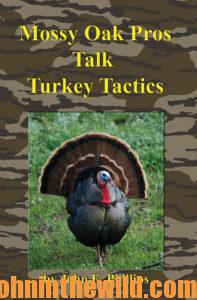
* I learned that instead of trying to guess which way a turkey is going to fly when he leaves the roost, my chances of bagging a turkey are much better if I go to a spot where I know the turkey will be after he leaves the roost. By taking that chance, I was able to down a gobbler while the other writers, who thought they could take a turkey from the roost, didn’t even have a gobbler close to them.
* You need to make sure the turkey is absolutely dead. Since the gobbler quit flopping when I put my foot on its head, I was confident that the bird was dead. However, I never would’ve thought that a dead bird could be reincarnated while laying less than 5 feet away from me.
To learn more about turkey hunting, check out John E. Phillips’s book “Mossy Oak Pros Talk Turkey Tactics,” available in print and Kindle versions at http://amzn.to/1qZnffi.
Tomorrow: Bagging the Romeo Turkey

